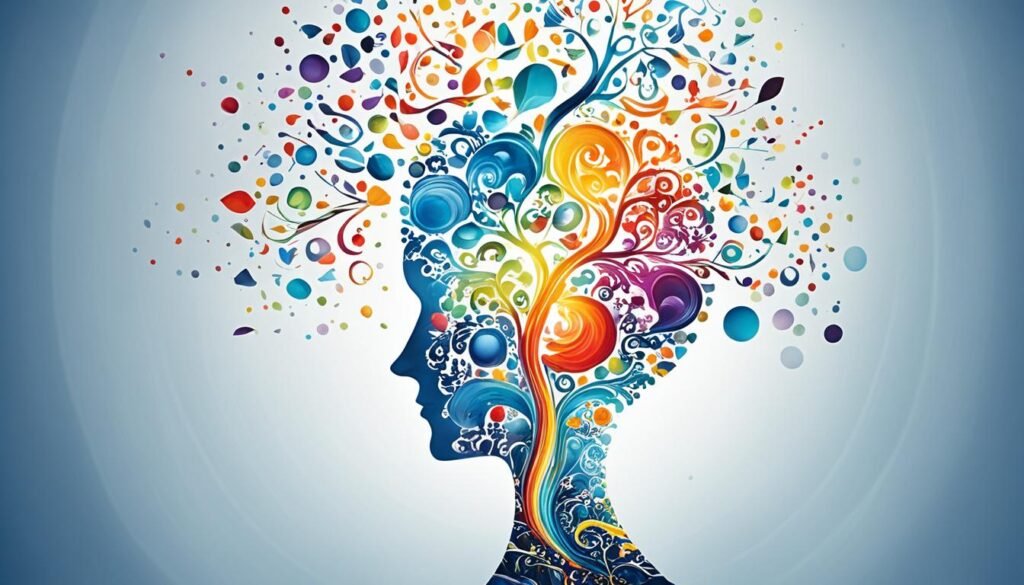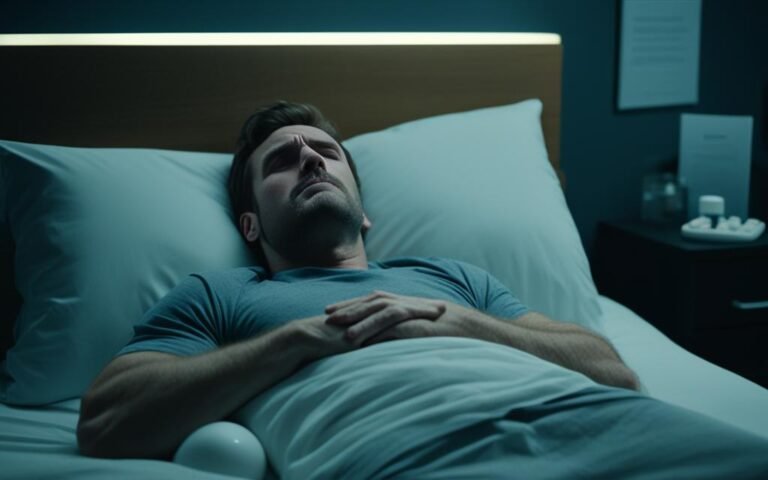Welcome to our article on the core principle that underlies cognitive therapy. In this section, we will provide an overview and explanation of cognitive therapy, focusing on its fundamental principle and the principles that guide its approach.
Which principle underlies cognitive therapy? First off, Cognitive therapy is a widely used therapeutic approach that is based on the understanding that our thoughts, feelings, and behaviors are interconnected and influence each other. By changing our thoughts, we can positively impact our emotions and actions. This therapy aims to identify and challenge cognitive distortions and dysfunctional thought patterns to promote mental health and well-being.
With a goal-oriented, time-based, and structured treatment approach, cognitive therapy has shown effectiveness in addressing various mental health issues. By exploring and modifying our thought processes, we can bring about positive changes in our lives and improve our overall well-being.
To enhance your understanding of this topic, let’s delve deeper into the interconnected triad of thoughts, feelings, and behaviors, the role of core beliefs in shaping our worldview, and the transformational power of reframing perspectives. These concepts are integral to the practice of cognitive therapy and can help you grasp the cognitive therapy principles underlying its approach.
Key Takeaways:
- Cognitive therapy is based on the principle that our thoughts, feelings, and behaviors are interconnected.
- The core principle of cognitive therapy is that by changing our thoughts, we can positively influence our emotions and behaviors.
- Cognitive therapy focuses on identifying and challenging cognitive distortions and dysfunctional thought patterns.
- Thoughts, feelings, and behaviors form an interconnected triad in cognitive therapy.
- Core beliefs shape our worldview and influence our thoughts, feelings, and behaviors.
Understanding the Bedrock of Cognitive Therapy
In cognitive therapy, the interconnected triad of thoughts, feelings, and behaviors plays a central role in understanding and transforming our mental well-being. These components are deeply intertwined, with each influencing and shaping the others.
Interconnected Triad: Thoughts, Feelings, and Behaviors
Our thoughts have a significant impact on our emotions and behaviors. When we have negative or distorted thoughts, they can lead to negative emotions and unhealthy behaviors. Similarly, engaging in positive thoughts can foster positive emotions and adaptive behaviors.
The Role of Core Beliefs in Shaping Our Worldview
Core beliefs are deeply ingrained beliefs about ourselves, others, and the world. These beliefs are formed through our past experiences, upbringing, and cultural influences. They shape our worldview and significantly impact our thoughts, emotions, and behaviors. Negative core beliefs can lead to cognitive distortions and contribute to psychological distress.
The Transformational Power of Reframing Perspectives
Reframing perspectives is a fundamental technique in cognitive therapy. It involves challenging and changing negative or distorted thoughts to create more positive and adaptive responses. By reframing our perspectives, we can shift our mindset, overcome cognitive biases, and develop healthier ways of thinking. This process empowers individuals to view themselves, others, and the world in a more balanced and constructive light.
Identifying and Challenging Cognitive Distortions
Cognitive therapy focuses on helping individuals recognize and address cognitive distortions, which are irrational thought patterns that distort our perception of reality. By identifying and challenging these distortions, we can gain a more accurate understanding of ourselves and the world around us.
The Prevalence and Impact of Automatic Negative Thoughts
Automatic negative thoughts (ANTs) are involuntary, habitual negative perceptions that can significantly impact our emotions and behaviors. They often occur automatically and can be difficult to recognize. These thoughts are shaped by our core beliefs and can lead to a negative cycle of distorted thinking. By becoming aware of our automatic negative thoughts, we can begin to challenge and reframe them, ultimately influencing our emotional well-being.

Exercises for Decatastrophizing: A Technique to Challenge Extremes
Decatastrophizing is a cognitive therapy technique used to challenge extreme beliefs and reduce catastrophic thinking. This technique involves examining the evidence for and against our catastrophizing thoughts and finding more realistic and balanced alternatives. By recognizing that the feared consequences are unlikely to occur or wouldn’t be as severe as imagined, we can reduce anxiety and improve our overall well-being.
Recognizing Patterns of Dysfunctional Assumptions
In cognitive therapy, recognizing patterns of dysfunctional assumptions is a critical step in modifying negative thought patterns. Dysfunctional assumptions are underlying beliefs that drive our thoughts, feelings, and behaviors. By identifying these patterns, we can challenge the validity of our assumptions and replace them with healthier, more adaptive ones. This process allows us to shift our perspective and promote positive change in our lives.
Dynamic Interaction of CBT Techniques in Therapy
In cognitive-behavioral therapy (CBT), various techniques are used in a dynamic and interactive manner. These techniques work together to address different aspects of a person’s thoughts, feelings, and behaviors. The goal is to create a comprehensive and personalized treatment plan tailored to each individual’s needs.
Examples of CBT techniques include:
- Cognitive restructuring: This technique involves identifying and challenging negative or irrational thoughts and replacing them with more realistic and adaptive ones.
- Exposure therapy: This technique helps individuals confront and gradually expose themselves to situations or stimuli that trigger their anxieties or fears. It aims to reduce their distress and enable them to develop healthier coping strategies.
- Activity scheduling: This technique focuses on planning and incorporating positive and enjoyable activities into one’s daily routine. It promotes a sense of accomplishment, enjoyment, and helps counteract feelings of depression and lethargy.
- Guided discovery: This technique involves the therapist asking strategic questions to facilitate self-reflection and insight. It encourages individuals to explore their thoughts and beliefs, leading to a deeper understanding of their emotions and behaviors.
Through the dynamic interaction of these CBT techniques, therapists can help individuals gain insight into their thoughts, challenge dysfunctional patterns, and develop healthier coping strategies. This integrative approach enhances the effectiveness of cognitive therapy and promotes lasting positive changes in mental health and well-being.
Which Principle Underlies Cognitive Therapy
The fundamental principle of cognitive therapy is that our thoughts have a significant impact on our emotions and behaviors. By changing our thoughts, we have the power to alter how we feel and how we act. This core principle forms the bedrock of cognitive therapy and serves as a guiding principle throughout the therapeutic process.
Core principles of cognitive therapy
In addition to the principle of thought-emotion-behavior, cognitive therapy approach also emphasizes collaboration between the therapist and the individual. It is an active and participatory therapy that encourages the individual to take an active role in their treatment journey. By actively engaging with the therapeutic process, individuals can gain a deeper understanding of their thoughts and emotions, and work towards meaningful change.
Another principle of cognitive therapy is its goal-oriented and problem-focused nature. The therapy is designed to address specific issues and challenges that individuals may be facing, with a clear focus on identifying and modifying specific patterns of thinking and behavior. By setting clear goals and working towards them, individuals can make progress and experience positive changes in their mental well-being.
Overall, the key principles in cognitive therapy underscore the importance of recognizing and transforming our thoughts to promote emotional well-being and positive behavior change. Through collaboration, active participation, and goal-oriented treatment, cognitive therapy empowers individuals to take control of their thoughts and lead more fulfilling lives.

From Theory to Practice: Implementing CBT Strategies
Implementing cognitive-behavioral therapy (CBT) strategies is an essential step in bringing about positive changes in thoughts, feelings, and behaviors. Let’s explore some key techniques that can be used within CBT to promote emotional well-being and personal growth.
The ABC Technique Demystified
One effective cognitive therapy technique is the ABC technique, which stands for Activating Event, Belief, and Consequence. This technique involves analyzing and reframing thoughts by examining the events that trigger them, the beliefs we hold about those events, and the resulting emotional and behavioral consequences. By identifying and challenging irrational beliefs, we can develop more balanced and constructive thought patterns.
For example, suppose you receive constructive feedback from your supervisor (activating event) and believe that you are a failure and will never succeed (belief). As a consequence, you may feel dejected and avoid taking on new challenges (consequence). By using the ABC technique, you can challenge this belief and replace it with a more realistic and empowering perspective.
The Insightful Benefits of Keeping a Behavioral Journal
A behavioral journal can be an invaluable tool in cognitive therapy. By recording your thoughts, feelings, and behaviors in various situations, you can identify patterns and triggers that contribute to cognitive distortions. This self-reflection process helps create awareness and understanding of the connections between your thoughts and emotions, enabling you to challenge and modify unhelpful thought patterns.
Your behavioral journal can also provide valuable insights into the effectiveness of different coping strategies and interventions. If you are tracking your progress over time, you can objectively assess your growth and identify areas where further work is needed.
Setting S.M.A.R.T. Goals within Cognitive Therapy
In cognitive therapy, setting goals is an essential part of the treatment process. By setting S.M.A.R.T. goals, you can create a structured framework that promotes clarity, motivation, and progress monitoring. S.M.A.R.T. stands for Specific, Measurable, Achievable, Relevant, and Time-based.
Specific goals clarify exactly what you want to achieve, making them easier to measure and track. Measurable goals provide concrete criteria for evaluating progress. Achievable goals are attainable and realistic, considering your current circumstances and abilities. Relevant goals align with your values and therapy objectives. Time-based goals have a specific timeframe for completion, providing a sense of urgency and accountability.
By setting S.M.A.R.T. goals within cognitive therapy, you can enhance your focus and commitment to the therapeutic process, leading to greater success and personal growth.
Implementing CBT strategies, such as the ABC technique, keeping a behavioral journal, and setting S.M.A.R.T. goals, can greatly enhance the effectiveness of cognitive therapy techniques. These practical tools empower individuals to challenge and modify their thoughts, leading to improved emotional well-being and a more fulfilling life.
Conclusion
Bridge Building: How Thoughts Influence Outcomes in Life
In conclusion, cognitive therapy highlights the powerful influence that our thoughts have on our outcomes in life. The interconnected nature of our thoughts, feelings, and behaviors means that by changing our thoughts, we can make positive changes in our emotions, behaviors, and overall well-being. Our thoughts serve as the bridge that connects our inner world to our outer experiences, shaping how we perceive and interact with the world around us.
The Lasting Effects of CBT: Empowerment Beyond Therapy
The lasting effects of cognitive therapy extend far beyond the therapy room. By gaining insight into our thought patterns and learning effective strategies to challenge and modify them, we are empowered to take control of our thoughts and live a more fulfilling life. Cognitive therapy equips individuals with invaluable tools and skills that can be applied in everyday situations, leading to long-lasting positive changes in mental health and personal growth.
In summary, cognitive therapy offers an evidence-based approach to improving mental well-being. Through understanding the interconnected triad of thoughts, feelings, and behaviors, identifying and challenging cognitive distortions, and using a range of CBT techniques, individuals can reshape their thoughts, influence their outcomes in life, and experience lasting empowerment beyond therapy. By harnessing the power of our thoughts, we can pave the way for a more positive and fulfilling future.










